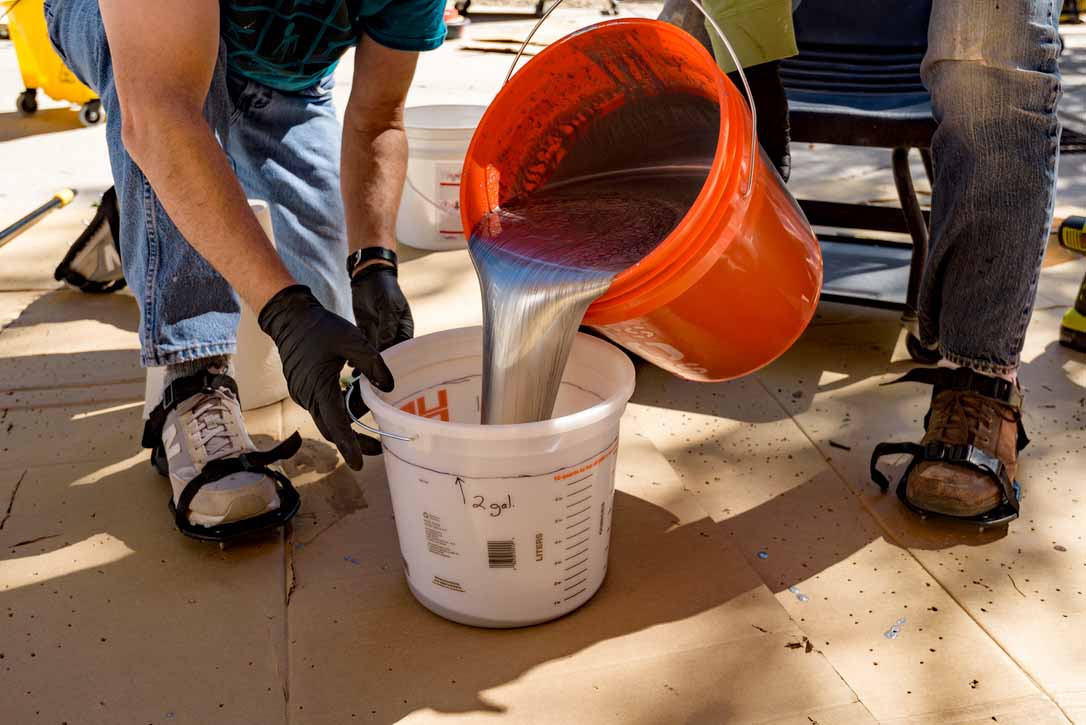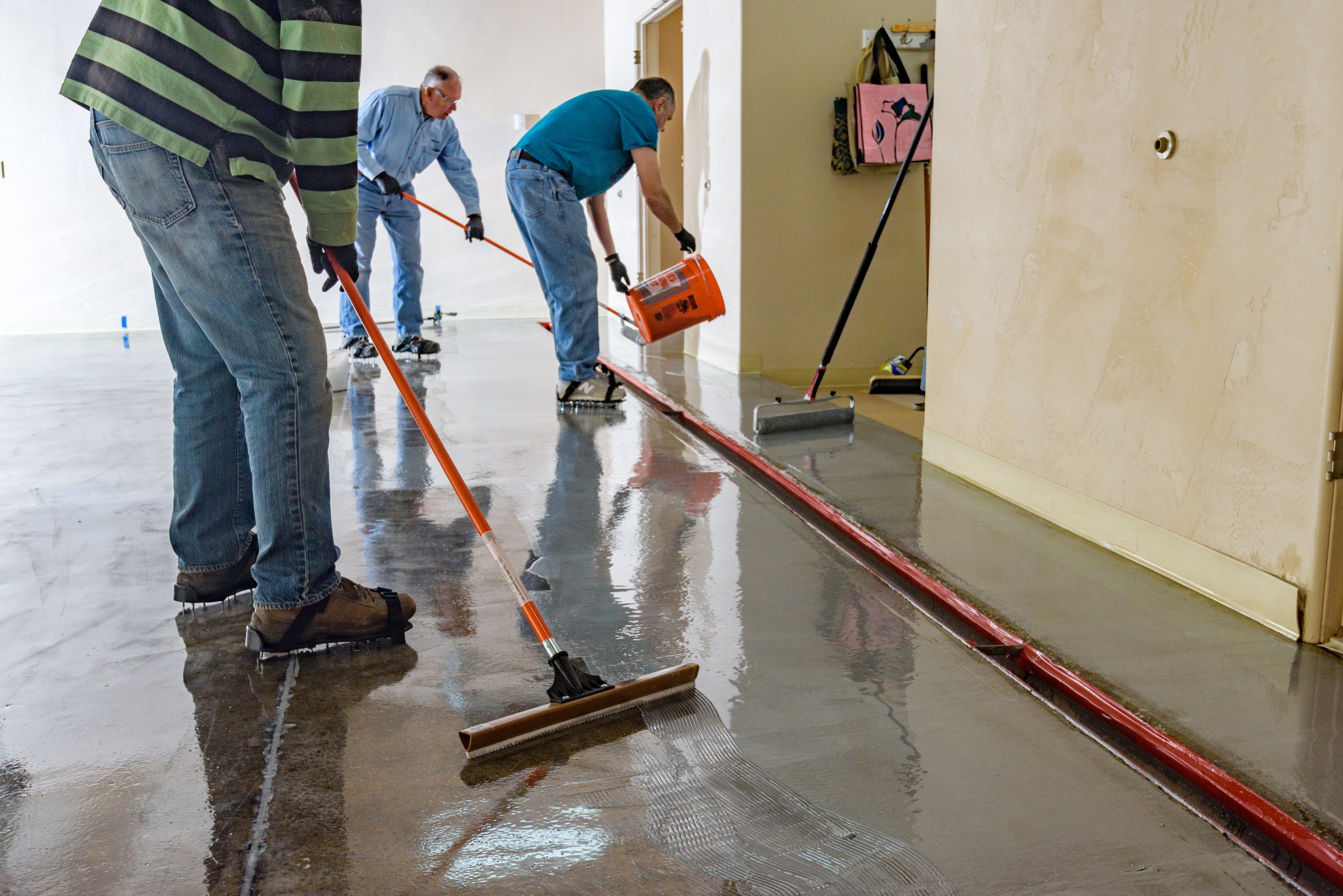The Dog Days of Summer
Tips for hot weather epoxy application
Coating your garage or workshop floor is an ideal summer project. You can empty the contents and store them temporarily outside without the threat of rain. Cleaned and rinsed floors dry out quickly, and long days provide ample light to work by. It is a great time to check off some of the bigger to-do list items!
However, hot summer days do introduce factors that may add a twist to your plans. Understanding the why and how will help you to properly assess, and plan out your coating project. The ideal temperature range for applying epoxy coatings is between 60° - 80°F, when the thermometer starts to climb above 80° the following tips will help to ensure that your coating experience will be a complete success!
Two-part epoxies that consist of Part A: resin and Part B: hardener typically rely on a chemical process called Exothermic Reaction as part of the curing process. Basically, when the Part A molecules run into the Part B molecules, they get very excited and move about rapidly. This excitement generates heat, lots of it actually. So much so that if left in tight quarters, such as a mixing bucket, it will generate so much heat that it may actually begin to smoke! Increased heat results in decreased cure time, which means that the mixed epoxy will start to solidify more quickly the hotter it gets.

So, you can see where this is going… When applying on hot days, you will have less time to work the epoxy once mixed. At 70°F, the “pot life”, period of time where the epoxy remains pliable, is about 30 minutes. At 90°F+, the pot life can get down to 15 minutes. At 60°F, it can increase to 45 minutes.
Here are some ideas to get through hot weather projects:
- Plan on applying the coatings in the evenings well after peak heat time of day (typically between 3:00 and 4:00 pm). This is particularly important for the BondTite prime coat as it will help minimize bubbles forming in the cured coat.
- Store all epoxies and urethane materials in a cool area (60°- low 70°s is ideal) a couple of days before the actual coating time.
- Do NOT mix in direct sunlight if it can be avoided.
- If mixing & applying in the evening, plan ahead for the potential of flying and crawling insects and how you will manage them. This will be very important when it comes to the final clear coat application! A low-speed fan and turning off the lights when done will help.
- Extra hands. In general, a crew of three people, one person mixing and two spreading, can get a lot done in a short amount of time working with 3 gallons at a time. For larger projects, 1,400sf+, a 4th person will be very helpful.

- Have spiked shoes for anyone back-rolling / spreading. And while we’re on the topic. Make sure that everyone has checked, adjusted, and is comfortable in their spiked shoes before you start mixing material!
- Anyone with spiked shoes, i.e., back-rolling, should be carrying an extra pair of gloves (and some paper towels) in their pocket just in case you need a fresh pair while out on the floor.
- Have extra roller covers handy at all times.
- Have a spray bottle of denatured alcohol, MEK, or 91% isopropyl alcohol (in case the others are unavailable) and plenty of heavy-duty paper towels handy for cleaning mix wands, buckets, etc., and wipe up any spilled epoxy right away.
- Headbands and wrist bands like those used in tennis will be invaluable if humidity is high or you tend to sweat a lot… Try not to drip sweat into the final clear coat ;-).
- The person responsible for mixing should also track time and progress during the spreading/back-rolling phase. As the back-rolling of a section approaches completion, start the next mix.
Take time to walk everyone through the process before cracking open cans of material. It’s very much like a well-choreographed dance. Everyone should know their places, have their tools handy, and be ready to accomplish their specific task/s.

